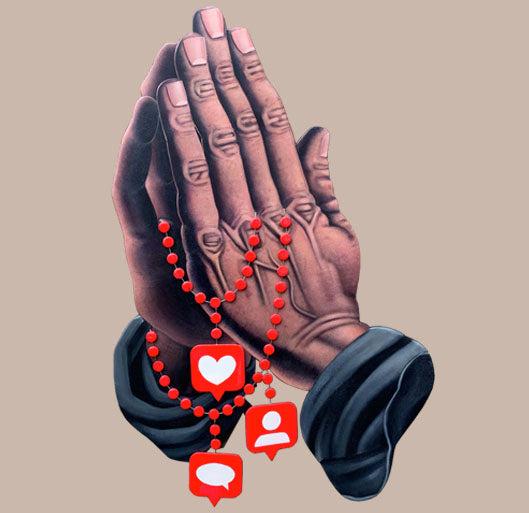How does irony appear in Douglass’s description of slaveholders’ Christianity? Explain Douglass's purpose.
It’s ironic because those who claim to be the most dedicated Christians also commit the most brutal acts of slavery. Douglass highlights this contradiction to expose religious hypocrisy and convince his audience to fight against this system.
Taken as a whole, Chapter 6 is best described as:
A) A sentimental reflection on Douglass’s childhood.
B) A critique of the brutality of slave labor.
C) An exploration of slavery’s corruption of both enslaved and slaveholders.
D) A description of Douglass’s escape to the North.
C
Draw a visual that highlights the definition of PIOUS

Using stories of family members, like his grandmother, his aunt, etc.
Anecdote — evokes sympathy and shows slavery’s impact on real people.
What is the principals first and last name
Erin Sadler
Explain the rhetorical effect of Douglass comparing himself to a beast when under Covey (ch.10).
The comparison dehumanizes him, reflecting slavery’s attempt to strip enslaved people of humanity. It appeals to readers’ emotions by shocking them with how slavery reduces a man to an animal.
The anecdote in Chapter 8 about Douglass’s grandmother serves primarily to:
A) Illustrate the role of older women in enslaved families.
B) Provide comic relief in an otherwise dark chapter.
C) Expose the dehumanization of slavery through abandonment.
D) Suggest that Douglass felt distant from his extended family.
C
Imagine slavery leaves behind hatred and shame — what word could describe that feeling?
A) Odium
B) Bestow
C) Festering
A. ODIUM
Douglass states multiple times: “I am a man, and they are men” when discussing fellow slaves.
Repetition — emphasizes their humanity
Solve for x:
3x+7=19
X = 4
In Ch. 10, why does Douglass emphasize his “love for his fellow slaves”?
It is another strategy to gain the sympathy of his audience by showing them that just like them, the enslaved also love and desire family, community.
Douglass contrasts Sophia Auld’s transformation in order to:
A) Show that women were naturally crueler than men.
B) Highlight slavery’s corruptive effect on even the kindest individuals .
C) Suggest that religion protected her morality.
D) Compare her to male slaveholders such as her husband.
B
Which word describes something slowly decaying:
MOLDERING, FESTERING, BESTOW
MOLDERING
Describing his fear and excitement when escaping to the North.
Tone shift / Emotional diction — conveys complex emotions and draws reader empathy.
Which gas do plants take in during photosynthesis?
Carbon Dioxide
What was Douglass’ state of mind upon first escaping to the North? What led to the conflicted emotions that he felt? (ch.11)
Douglass felt both overjoyed at his newfound freedom and fearful of capture, as well as lonely in an unfamiliar place.
In Chapter 6, Douglass refers to a “fatal poison.” What does this metaphor most clearly represent?
A) The physical illness caused by harsh labor
B) The moral corruption of slaveholders, exemplified by Sophia Auld
C) The danger of escaping slavery
D) The bitterness felt by enslaved people
B.
Pick the best synonym for destitute:
A) Rich and happy
B) Poor and lacking
C) Very sneaky
B.
“The fatal poison of slavery had already begun to work.” (Ch. 6)
Metaphor — slavery corrupts Sophia Auld, showing its moral contagion.
Before he was Frederick Douglass, he was...
Frederick Bailey
What is ironic about Douglass’ mindset after he teaches himself to read enough to read the Colombian Orator? (Ch.7)
Douglass expected reading to bring freedom, joy, but instead it deepened his awareness of slavery’s injustice and made him more miserable.
The Appendix is best understood as Douglass’s attempt to:
A) Clarify that he condemns false Christianity, not Christianity itself.
B) End his narrative on a more optimistic note.
C) Give a detailed account of his escape.
D) Appeal to abolitionists for financial support.
A
Draw a visual that represents the definition of the term:
ABHOR

“You have seen how a man was made a slave; you shall see how a slave was made a man.”
Parallelism / Contrast — emphasizes personal transformation and strength.
The Louisiana Purchase doubled the size of the United States. Which president made this deal?
Thomas Jefferson